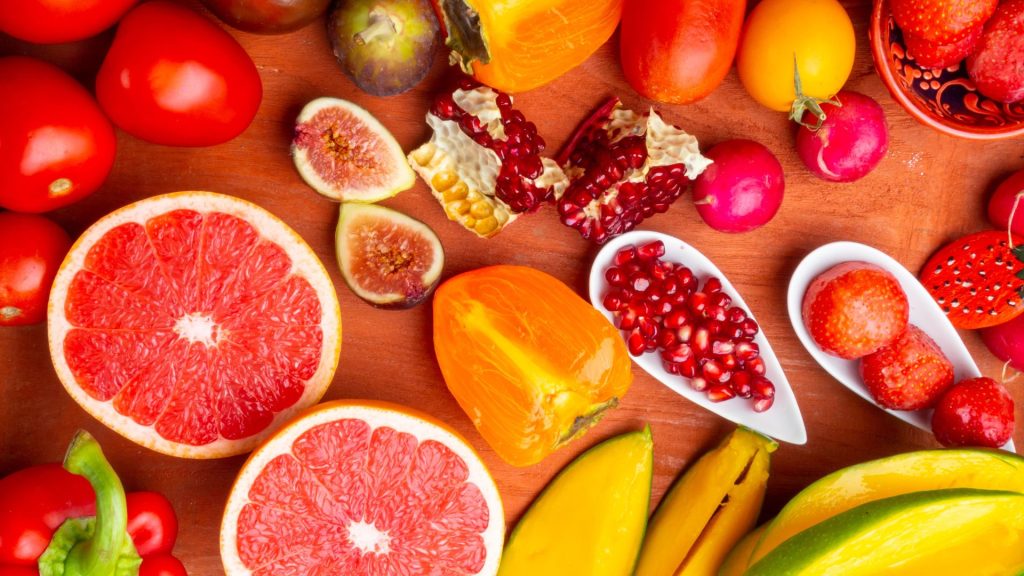
Natural colors have gained increasing consumer appeal as consumers look for products without artificial or synthetic ingredients, but must also meet rigorous quality, stability, and sustainability standards.
Natural dyes made from fruits, vegetables and edible plants offer a healthier alternative to synthetic dyes like FD&C Red #40, Yellow #5 and Blue #1 that have been linked to hyperactivity in children and require special labeling in Europe.
Carotenoids
Carotenoids are pigments found in fruits and vegetables that give them their characteristic yellow, orange, or red colors. Not only are they nutritional supplements but can be converted to vitamin A during digestion.
Carotenoid lutein is responsible for giving feathers of flamingoes and autumn leaves their vibrant red hue. Furthermore, this potency anti-oxidant plays a significant role in both processes.
Natural carotenoid compounds offer an alternative to artificial colorants due to their low toxicity at recommended dosage levels and can contribute to health benefits of consuming fruits and vegetables. They can even serve as natural preservatives; however their usage may be restricted due to poor chemical and sensory stability, low water solubility, or high viscosity.
Anthocyanins
Anthocyanins are natural water-soluble pigments found in many fruits and vegetables that lend red, purple and blue hues. According to scientific literature, anthocyanins and anthocyanidins exhibit antioxidative activity and help protect against noncommunicable diseases through various mechanisms including free-radical scavenging, changes in blood biomarkers levels, mitogen-activated protein kinase pathways activation as well as signaling from inflammatory cytokines signaling pathways activation and signaling.
Anthocyanins can be found in various fruits, berries, vegetables and flowers, including 3-hydroxyanthocyanidins and 3-deoxyanthocyanidins that fall under three categories – 3-hydroxyanthocyanidins and 3-deoxyanthocyanidins respectively. Further classification includes acylated anthocyanins such as cyanidin-3-glucoside delphinidin peonidin malvidin.
Phthalocyanins
Phthalocyanines are complexes of phthalic acid (C32H18N8) with one or more metallic elements, creating bright blue to green colored synthetic pigments used as synthetic dyes and stainers for textile dyeing, paper manufacturing and microscopy staining applications.
These large macrocycles possess an outstanding chemical and thermal stability. Their crystal lattices exhibit strong tinting strength and coverage capacity while being unaffected by alkalis or acids and being light fast.
Copper phthalocyanine is one such pigment with limited solubility in aromatic solvents and naturally crystallizes into its stable b form.
Violets
Violet (Viola) flowers, leaves and rhizomes have long been appreciated as both edible and medicinal ingredients, being widely utilized for food, tea or bath soak applications.
They can be grown in gardens, perennial flower beds or as border plants to complement other flowers. Furthermore, they work well when grown in containers.
Their seeds boast an appendage reminiscent of a cuticle and are easily dispersed by ants; these insects then deposit the hard-coated seeds into waste heaps (middens) which provide fertile growing environments for violets and other woodland species.
Blues
Though many of us encounter blue in our daily lives, it is one of the rarest colors found in nature due to the complexity of building molecules that absorb low-energy light sources and reflect it back as blue hues.
Many manufacturers of natural colors are working hard to develop stable blue hues. Spirulina blue, a water-soluble pigment made from alga Spirulina, has already found wide application in industry.
Denish notes that this particular blue is relatively stable and boasts a bright hue without any green or purple undertones, making it suitable for use with yellow to create vibrant green tones.
Greens
Natural colors derived through physical and chemical means are used in high-temperature processed food products like extruded breakfast, baked products and candy. Their variety of hues offers excellent heat, light and pH stability for use in high-temperature processing environments.
Natural colors such as FD&C Red #40, Yellow #5, Blue #1 and Green #3 biodegrade more easily than synthetic ones such as FD&C Red #40 Yellow #5 Blue #1 and Green #3 dyes; this makes a positive contribution both for our environment and health.
Marketers should emphasize natural colors as a form of circular economy production to their consumers, such as cochineal extracted through an eco-friendly and humane process from female cochineal insects.
Yellows
Consumers seeking simplified ingredient labels increasingly demand natural yellow hues like those produced from safflower and turmeric extracts as well as those extracted using carrot and paprika for deeper golden egg yellow tones. These extracts range from citrusy with greenish overtones using safflower to golden egg yellows made with carrot and paprika for deep golden egg yellow hues.
Yellow has long been associated with wealth and power across different cultures. In Chinese symbolism, it represents masculine energy while gold represents royalty and wisdom.
Yellow hues typically derive their hue from carotenoids or betalains, both of which are highly stable pigments that don’t easily bleed during food processing.


